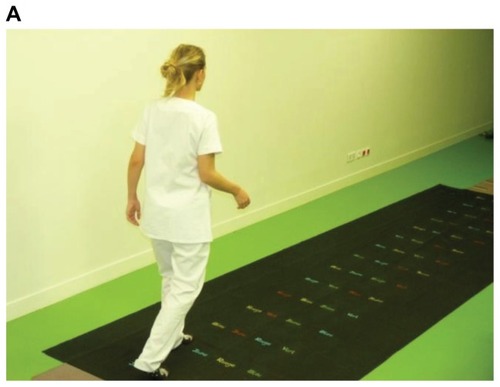Figures & data
Figure 1B First condition: DTB&W.
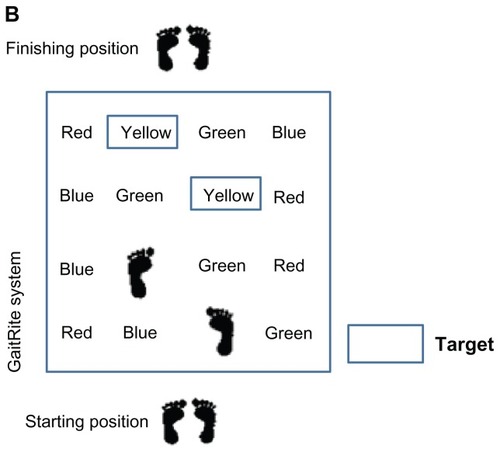
Figure 1C Second condition: DTWord.
Note: In that condition, the subject has to read and to walk on the word “yellow”.

Figure 1D Third condition: DTColor.
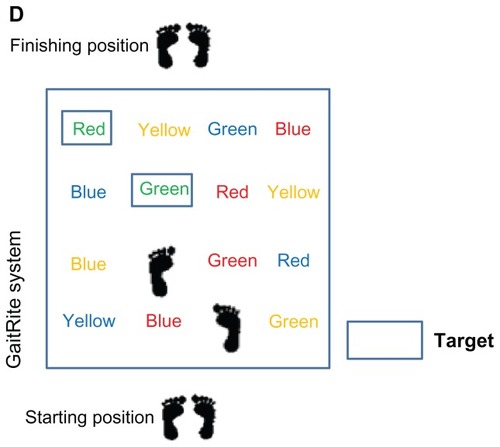
Figure 2 Gait pattern Dendogram of the ST.
Abbreviations: Y, Young; O, Older; VO, Very Older; H, Healthy; BL, Borderline MCI; naMCI, non-amnesic MCI executive impairment only; aMCI, amnesic MCI; mdMCI, multiple-domain amnestic MCI.
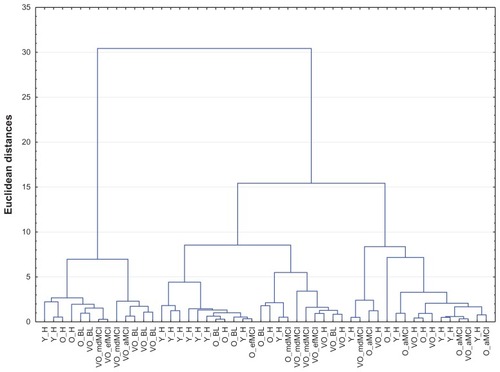
Figure 3 Gait pattern Dendogram of the ST and WSC.
Abbreviations: Y, Young; O, Older; VO, Very Older; H, Healthy; BL, Borderline MCI; naMCI, non-amnesic MCI executive impairment only; aMCI, amnesic MCI; mdMCI, multiple-domain amnestic MCI.
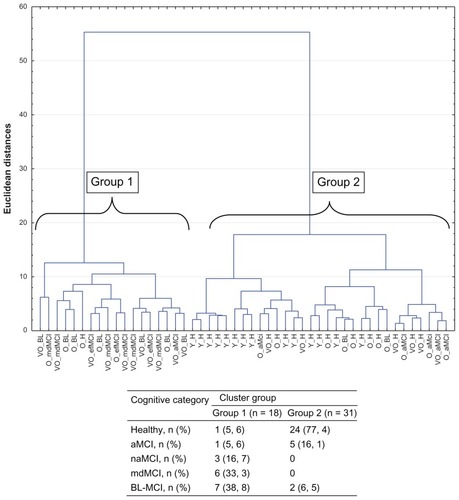
Table 1 Number of errors in all conditions in DT
Figure 4 Results of analysis of variance (ANOVA) on gait parameters in each cluster group and walking test condition.
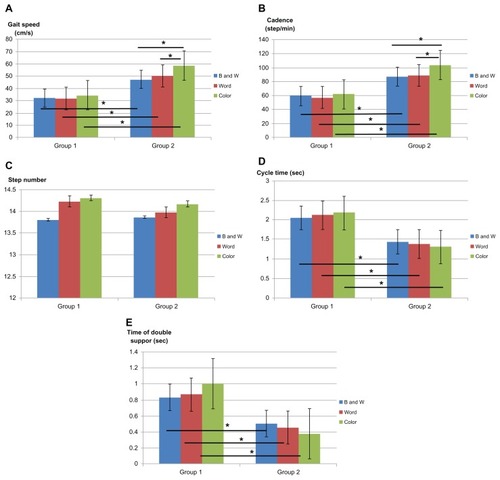
Table 2 Demographic and clinical characteristics of study participants stratified by cluster results
